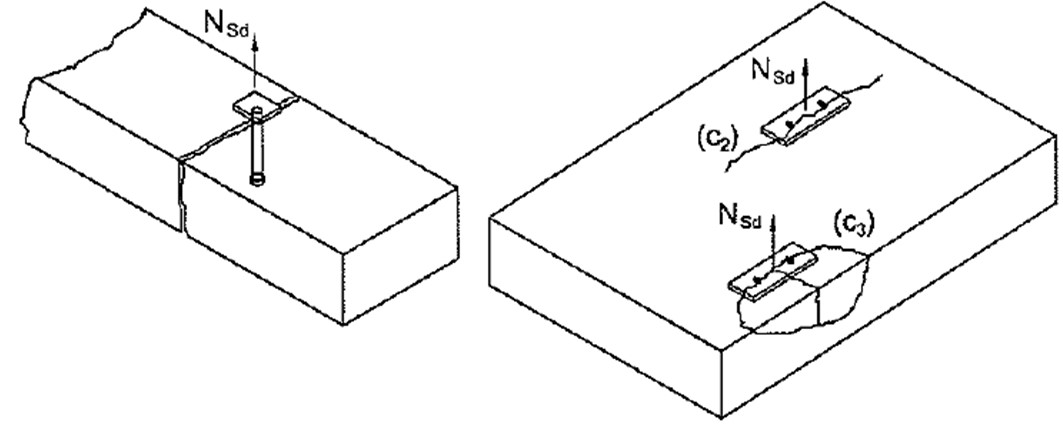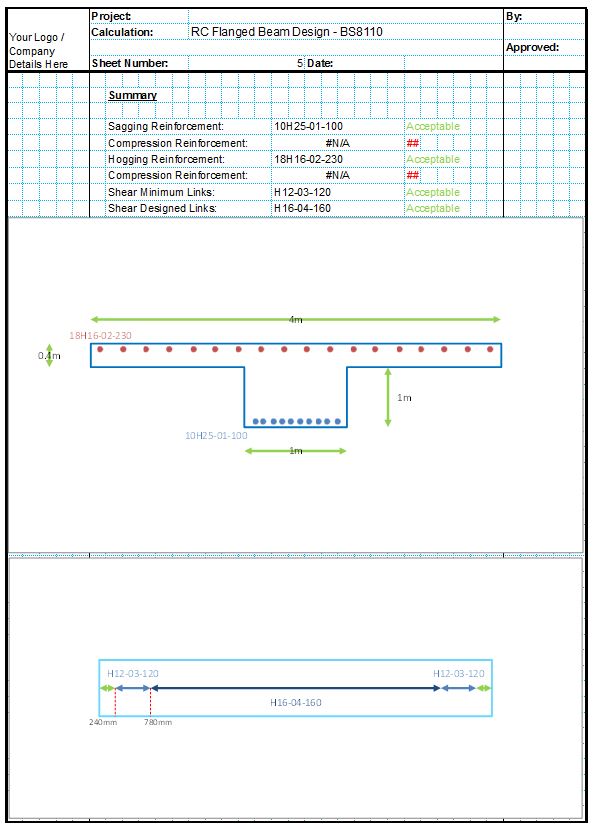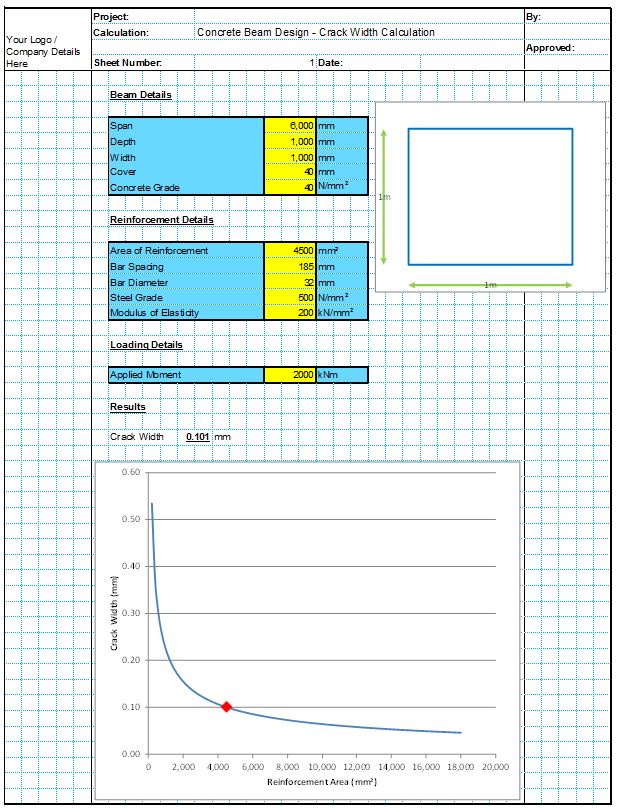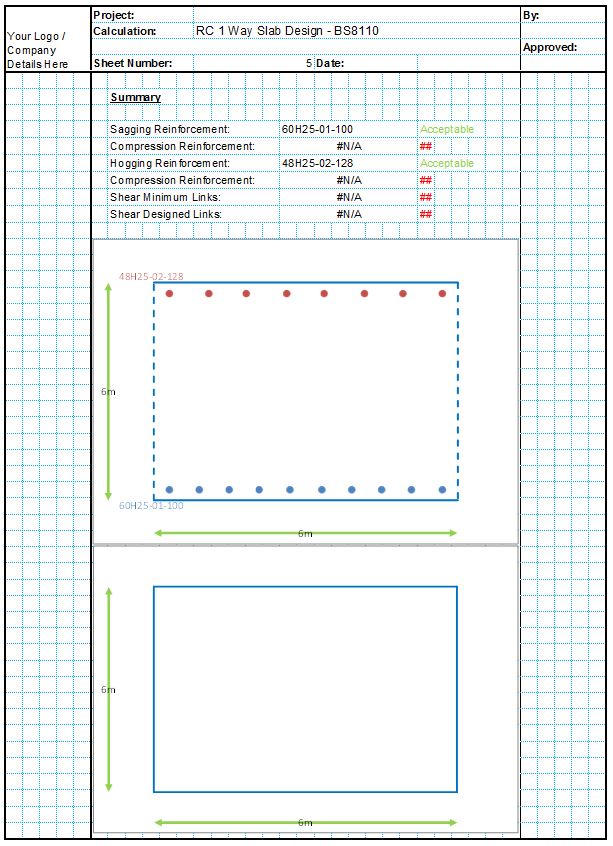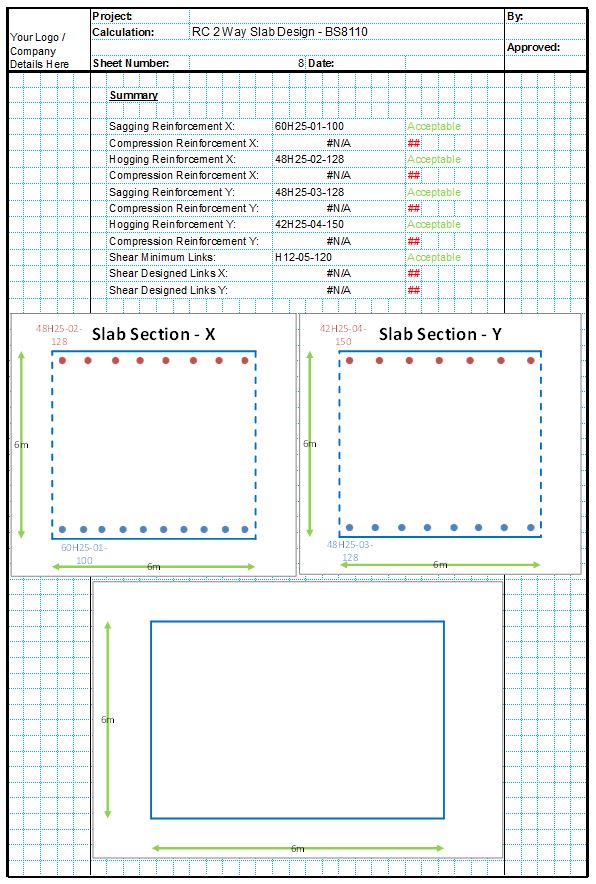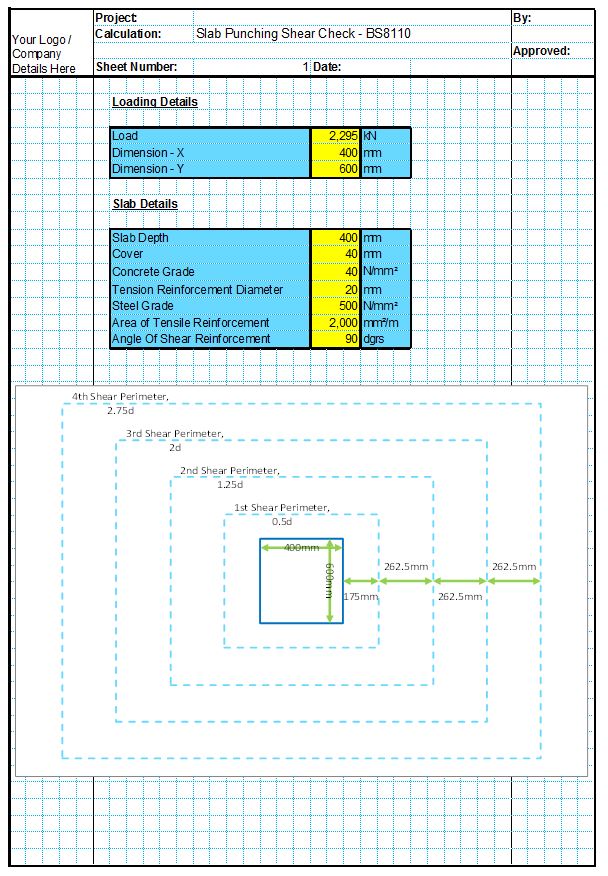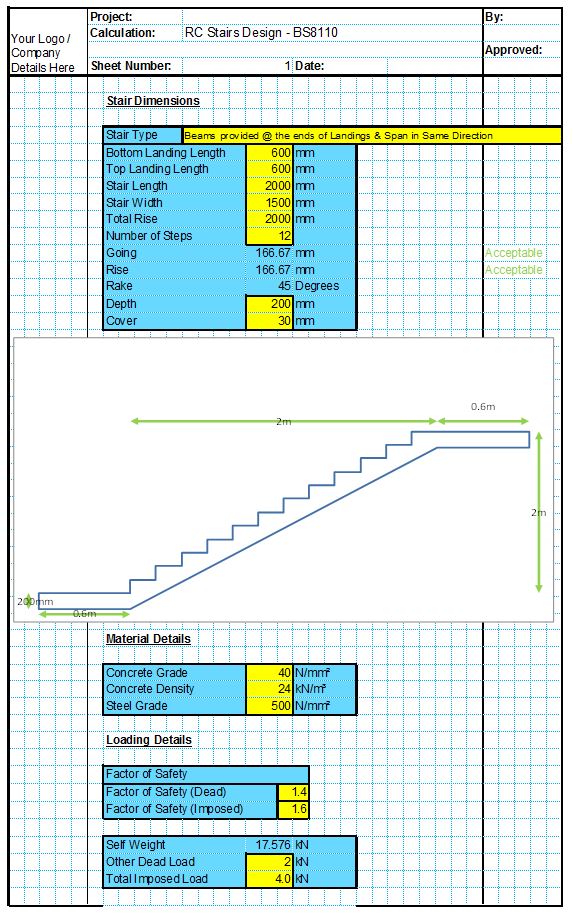Concrete Splitting Failure occurs when the concrete fails by splitting around the anchor location. This is shown in the diagram below. Concrete splitting failure mode is applicable for cast in anchors, mechanical anchors and chemical anchors. This can either occur as a result of the installation process or due to the loading on the fastener. The CivilWeb Concrete Anchorage Design Spreadsheet completes all the concrete splitting failure calculations detailed below for cast in anchors, mechanical anchors and chemically bonded anchors in accordance with BS EN 1992-4.
Concrete Splitting Failure from Installation
In some cases the concrete splitting failure can occur during the installation of the fastener. This can be avoided by complying with the manufacturer’s minimum values for edge distances (cmin), spacing (smin) and member thickness (hmin). They may also be requirements for reinforcement density which should be checked with the manufacturer.
Concrete Splitting Failure from Loading
Firstly there are a number of conditions which must be in place before concrete splitting failure can occur. Therefore, if any one of the below conditions exists, the splitting calculation need not be undertaken;
- The edge distance in all directions is greater than Ccr,sp for a single anchor, or greater than 1.2 . Ccr,sp for an anchor group.
Ccr,sp should be taken from the manufacturer’s info.
- The characteristic resistance for concrete cone failure and anchor bolt pullout failure is calculated for cracked concrete and the reinforcement resists the splitting forces and limits the crack width to 0.3mm or less.
The required cross sectional area of splitting reinforcement (As) can be calculated from the below equation;
Sum of the design tensile force of the fasteners in tension (NEd)
Nominal Yield Strength of the Reinforcing Steel (fyk)
This cannot be taken as more than 500 N/mm2.
Partial Safety Factor for Steel Failure (γMs, re)
This partial safety factor for reinforcing steel is typically taken as 1.15 in the UK.
- The load transfer area is in the compression zone of the concrete member.
- The tension component NEk of the characteristic loads acting on the fastening (single fastener or group of fasteners) is smaller than 10 kN.
- The tension component NEk is not greater than 30 kN. In addition, for fastenings in slabs and walls a concentrated reinforcement in longitudinal and transverse direction is present in the region of the fastening. The area of the transverse reinforcement should be at least 60 % of the longitudinal reinforcement required for the actions due to fastener loads.
Concrete Splitting Failure Design Verification Calculations
If none of the above conditions exist, then a check for concrete splitting failure must be done. The splitting resistance of the anchor must be greater than the tensile force, as shown in the below equation;
Partial Safety Factor for Concrete Splitting Failure (γMsp)
This is the partial factor of safety applied to concrete splitting failure. A value of 1.5 is typically recommended.
Characteristic Resistance to Concrete Splitting Failure (NRk,sp)
This is calculated using the below equations;
Initial Characteristic Resistance to Concrete Splitting Failure (NRk0,sp)
For cast in anchors and mechanical anchors this is calculated using the below equation. For chemical anchors this is equal to NRk0,c.
All other values (Ac,N, Ac0,N, Ψs,N, Ψec,N, Ψre,N) are calculated as in the Concrete Cone Failure section, except that the values ccr,N and scr,N are calculated using the member minimum depth (hmin), becoming ccr,p and scr,sp.
Member Depth Factor (Ψh,sp)
This factor takes into account the influence of the actual member depth on the splitting resistance of the concrete. This factor is calculated using the below equation;
Actual Member Depth (h) (mm)
Minimum Member Depth (hmin) (mm)
This is taken from the manufacturer’s info.
Effective Depth (hef)
This is the effective depth of the anchor.
Concrete Splitting Failure - CivilWeb Concrete Anchorage Design Spreadsheet
Concrete splitting failure due to tensile loading is only rarely a significant design factor. However in some cases where certain conditions are met it can be critical. The CivilWeb Concrete Anchorage Design Spreadsheet completes all the required checks to see whether concrete splitting failure check is required and if it is it completes all the above design calculations in accordance with BS EN 1992-4. It also includes unique features including our design graphs which makes this spreadsheet the quickest and easiest way to complete detailed concrete anchorage designs.
Get your copy of the CivilWeb Concrete Anchorage Design Spreadsheet now for only £20.
Download Free Trial Version
To try out a fully functional free trail version of this software, please Click Here or enter your email address below to sign up to our newsletter.
